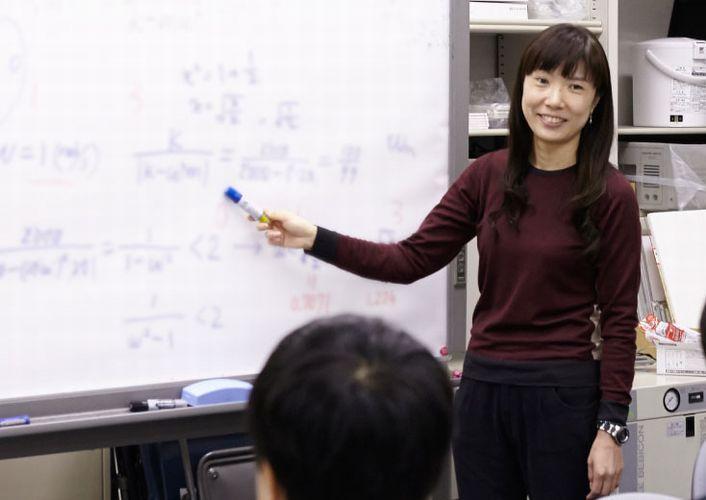- TOP
- Cutting-edge Research and Social Contribution
- Cutting-edge Research
- A wearable health maintenance support system for vital old age

A wearable health maintenance support system for vital old age

Developing robots and systems that cooperate with people to support them
Population aging is rapidly advancing, and various health promotion efforts have aimed at prolonging the 'healthy life years,' the years in which people can live independently without depending on medical or nursing care. Within that scenario, Associate Professor Shibata is developing robots and systems that work cooperatively with people to maintain their health.
Dr. Shibata says, "Since there are so many different symptoms poor health, it is important to have an individualized health support system. I would like to develop a system that supports the needs of users based on their individual data, rather than one system that fits everyone. This system could be thought as a second family doctor."
These health promotion robots and equipment need to be highly practical, and also simple and cost effective. With that in mind, Dr. Shibata has been focusing on the development of wearable compact systems.
One such system is an assistance system with real-time control for improving walking efficiency. This apparatus can realize "energy efficient walking." The person's walking energy consumption is estimated by measuring stride and pace while the person walks with sensors attached to his/her body. If the person's walking efficiency is not good, the system will assist the person to develop more efficient walking. In order to enable sensing appropriate to each user's way of walking, Dr. Shibata is proposing a system incorporating an inertial sensor. (An inertial sensor is a device that performs measurement using inertia.) Nowadays, with great advances in high performance and miniaturization, applications of inertial sensing are expanding. This easy-to-use advanced technology is being used to create a system for practical use.
The details of Dr. Shibata's research to support people's health will be presented in the next section.
Easy locomotion check: measuring at home, without relying on a specialist
Recently, the term locomotive syndrome is drawing attention. It refers to a state in which the locomotive function has deteriorated due to a disorder of the locomotorium, the system consisting of bones, joints, muscles and nerves. The syndrome, said to be a factor contributing to the shortening of healthy life, increases the probability of needing primary nursing care or becoming bedridden. One of the techniques for determining locomotive syndrome is the 'two step test," in which people are required to walk taking two big steps. Dr. Shibata is developing a system in which people can easily take the test and evaluate themselves. In the system, an inertial sensor is attached to the center of the person's low back. When the person takes two long steps forward the acceleration is measured, and the person's stride and stagger degree are calculated based on the data obtained.
Dr. Shibata explains, "If we provided the waveform data of the measured acceleration directly to users, they would not understand it, so I would like convert step length and stagger degree data into numerical values and offer the information in a form that anyone can understand."
If this mechanism can be put into practical use, users will be able to measure themselves easily, without consulting a medical specialist.
She continues, "If people can easily check numerical data on their smartphones, they can check their current condition at any time. This should increase health consciousness."
Dr. Shibata aims to develop this research further, and to create a mechanism that allows people to check the results of a specialist's medical examination at home, using the measured data.
A new support system for people to improve their unconscious posture
Not only elderly people have health problems. For example, many people around the world suffer from low back pain. In Japan, more than 80% of people experience low back pain in their lifetime, and about one in 10 people, that is, more than 10 million people, currently suffer from low back pain. One of the main factors is an increase in the burden on the low back due to holding the same posture for a long time, in activities such as driving and desk work. When a person is concentrating on work, the posture unconsciously becomes poor; this tends to place a heavy burden on the low back. In other words, in order to prevent back pain, it is important to maintain correct posture. However, it is very difficult to keep the correct posture just by feeling, without looking in the mirror. Thus there is a need for a system that enables people to remember correct posture. With that need in mind, Dr. Shibata has been developing a back pain prevention system which enables people to consciously improve their habitualized bad posture.
If people can be aware of their posture in their everyday life, that will lead to improvement, not only ending low back pain but also supporting the prevention of illness and the promotion of good health. Dr. Shibata and her team installed small sensors on people's back or lower back in a way that did not hinder daily life activities, and performed continuous sensing to detect postures and behaviors which are thought to cause distortion of the skeletal system (for example, staying in the same posture for a long time or staying almost motionless, which could gradually cause deterioration). How the posture changes over time is measured by the deviation from so-called good posture, which rarely induces low back pain. A data set for various postures can be stored on a cloud server so that the data can be viewed on personal computers and smartphones. When the user assumes a posture that places a heavy burden on the lower back, the system notifies the user in real time. The goal of this research is to realize a groundbreaking support system that can encourage bodily self-awareness and prompt people to correct their posture themselves.
Furthermore, experts such as orthopedic surgeons can analyze posture data recorded over a long period of time in order to clarify the cause and effect relation between the unique posture habits of a user and his/her lifestyle habits. This will make it possible to give individualized advice on improving posture.
Of course, ease and simplicity of operation are indispensable for the practical use of such a system, and miniaturization is a major consideration.
Dr. Shibata emphasizes, "It is important that we be able to measure with just a few sensors so small that people forget they're wearing them. At this moment, we are exploring the most effective placement of a small number of sensors."
The posture of the entire body can be said to be a key to health. That's why Dr. Shibata is focusing on this subject.
"If we can accumulate data on changes in Japanese people's posture through practical use of this sensor and gain an understanding of the process by which posture deteriorates, we can apply that data to the design of airplane and automobile seats. It's likely that in the future we'll be able to design seats that identify the posture deterioration of the person as they sit and prompt them to return to correct posture."
There has been great progress recently in the development of such a wearable sensor for health promotion. As the population ages, demand for that technology will increase more and more.
Dr. Shibata says, "For example, when walking becomes difficult, people tend to opt for a wheelchair immediately, but I think that can be avoided by providing more options for their recovery. I do hope that by putting these sensor systems into practical use we'll see a steady increase in the number of people who age in healthy way, without relying on hospitals."
Dr. Shibata and her team are working steadily towards their goal of enabling a healthy society through new applications of advanced technology.
